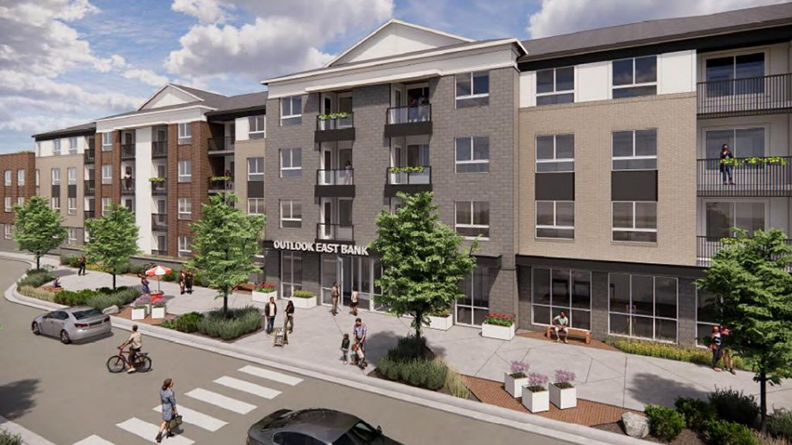The Contradictions of Urban Planning and the Proposed East Bank (Aurora, Colorado) Shopping Center Development
The following is a Guest Post by Kyle Cascioli, a long-time colleague with whom I’ve collaborated on numerous opinion pieces about urban development in the greater Denver metro region (all can be found on this blog). Kyle’s short commentary addresses the development plan that’s been proposed for a site in Denver’s neighbor of Aurora, the third most populous city in the State of Colorado and the 51st most populous city in the United States. The commentary appears on this blog because neither The Denver Post nor The Aurora Sentinel accepted it for publication.
Public review of urban development proposals is intended to be a check against private sector sprawl and bad project design. There’s plenty to fault in the proposed East Bank Shopping Center development at Parker and Quincy roads in Aurora, Colorado.

On January 12, 2022 the City of Aurora’s planning commission approved a massive, 311-unit, big box, multi-family, partial shopping center redevelopment project. The redevelopment is proposed by Kimco, a New York based Real Estate Investment Trust (REIT), and local development partner Evergreen.
Redevelopment of the center to include multi-family residences is a good idea. However, many neighbors are concerned that the size and unit density of the four-story structure will worsen the already significant traffic congestion at Parker and Quincy roads, an intersection that serves 89,000 cars per day.
More egregious is the proposed form and scale of this massive residential building. It required planning commission adjustment approval to allow a variance in building length from 200 feet to 610 feet. The proposal has no affordable housing component and thus is not conducive to social and economic inclusion. It violates Aurora’s Uniform Development Ordinance (UDO) regarding connectivity, spatial separation, and pedestrian walkability. The UDO also speaks to “Massing and Articulation”, with the goal of avoiding “long, monolithic building shapes and surfaces.” The proposed building is a fortress whose footprint is larger than a Denver city block. Much time, public opinion, and taxpayer money were invested in promulgating the UDO criteria. However, the criteria aren’t being respected. I’m told that all of the last nine developer requests for “UDO Adjustments” were approved by the Aurora planning department. Good urban planning requires architectural design that weaves new projects into a neighborhood’s existing physical and social fabric. This project will radically disrupt the existing fabric, isolate new residents from the surrounding neighborhood, and produce what amounts to a gated community.
Why would the planning commission approve the building variance? In 2019 the City of Aurora approved a new code called “Sustainable Infill Redevelopment (SIR).” The code targeted older neighborhood strip shopping centers on major arterials for one-size-fits-all zoning overlay without requiring a public referendum or vote on such a significant change. SIR had good intentions, to remedy blight and expand the city’s housing stock given significant population in-migration. However, its unintended consequences are poor architectural design and the planning commission’s abandonment of the City’s own UDO guidelines. The East Bank Shopping Center proposal contradicts the City’s long-term planning vision and ignores the surrounding community’s many valid concerns.
Kyle Cascioli is a commercial property reuse consultant and Adjunct Faculty in the Franklin L. Burns School of Real Estate & Construction Management, in the Daniels College of Business, at the University of Denver.
Leave a Reply